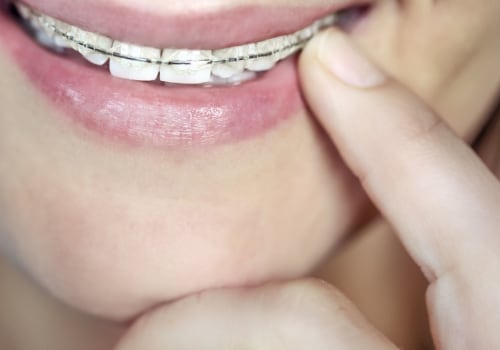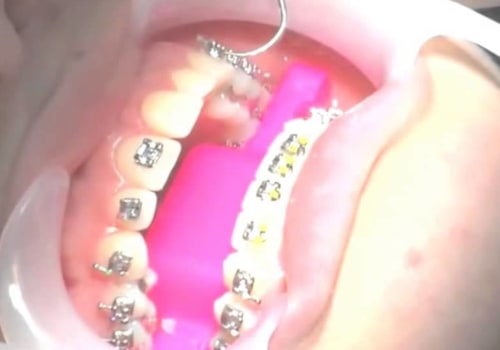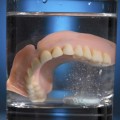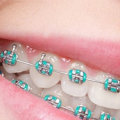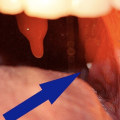When you sit in the chair at the dentist's office, do you ever feel confused? Do you hear the dentist and staff talk, but don't understand what they're saying? Dental terminology has almost its own language, with many unique terms and numbers used by professionals. You want to understand what they say about your teeth, right? Here's a guide to understanding dental jargon, especially what the numbers discussed mean. When you're sitting in the dentist's chair, the last thing you expect is to hear the word quadrant. When dental staff use this term, it is not referring to equations or formulas.
It's an expression on the parts of the mouth.
Dentists
divide the inside of the mouth into four sections or quadrants. The upper parts of the mouth are the first two quadrants, while the lower parts are the third and fourth quadrants. Therefore, the upper right part of the inside of the mouth is quadrant one (that is, the right side), while the upper left part is quadrant two.The lower part is a bit more confusing. While the upper part numbers the right side first, it is the opposite for the lower part. The lower left part is quadrant three and the lower right part is quadrant four. From the dentist's perspective, they examine your mouth from top to bottom.
It's easier to list quadrants so that the section below quadrant two is quadrant three. Gum disease is one of the most common problems dentists see. They have developed abbreviated terminology to define gum health. One of the measurements they will use to measure the gums is the space between the gum pocket and the nearby tooth.
Each of your teeth will receive a number for the space between the gums. Dentists measure this distance in millimeters. As a patient, you want to hear a smaller number. That means you have a smaller space between your tooth and gum, a sign of a healthy mouth.
A higher number indicates that you have gum problems, such as plaque and tartar buildup. When your distance indicates that your gums are 1 to 3 millimeters in diameter, what they're really saying is that you have healthy gums. It's a sign that you're brushing and flossing your teeth regularly, often taking good care of your teeth. Patients with this type of space between their teeth and gums are likely to have spent time between dental cleanings.
Inflammation occurs naturally in such situations. Your dentist may even warn you that you're in the early signs of periodontal disease or possible bone loss. They'll probably check if your gums bleed easily. A gum number of five millimeters or more is a problem.
Your dentist will almost certainly tell you to do a deep cleaning. The hope is that cleaning will eliminate the buildup between the tooth and the gum. Other possible causes include a broken tooth or loss of gums. In extreme situations, a person with this level of buildup will need corrective surgery, although the dentist will generally prefer to try minor treatments first.
The first thing to keep in mind is that dentists use a two-digit numbering system. So the upper right teeth start with the number “1” (that is, e. You may not have all of these teeth. For example, tooth 48 is a wisdom tooth, one that dentists often remove to improve the overall health of the mouth.
The upper half of the mouth has lower numbers. These are teeth 11-17 and 21-27 on the dental chart. However, the numbering system has a second purpose. It also identifies what type of tooth is under discussion.
With this information, dentists can quickly note which teeth have problems that need correction. For example, a splinter in the second molar of quadrant four would be shown as tooth 47 in the graph. The wisdom teeth are the eighth tooth in each quadrant, so they are numbers 18, 28, 38 and 48 respectively. To make this easier to understand and especially if you are looking for dental treatments in Cancun, we have placed a tooth numbering table that shows three main teeth numbering systems so that you can better decipher plans and teeth. When you hear your dentist whisper to their staff about quadrants, they aren't making complicated mathematical equations to calculate how much to charge you.
To check gum health, dentists measure space between tooth and gum bag and give each tooth a number corresponding to space between gums. The first step is deep cleaning or dental scraping to remove any buildup from teeth and get clearer picture of damage already caused. Sitting in dentist's chair is never very relaxing experience and it doesn't help lot of people when dentist and staff talk about numbers without explaining what they mean. It's important for patients to understand what these numbers mean so they can better understand their dental health. Understanding how dentists number teeth chart can help patients feel more comfortable when visiting their dentist. It can also help them make informed decisions about their oral health care. By understanding how dentists number teeth chart patients can better communicate with their dentist about their oral health needs. This knowledge can also help them make informed decisions about their oral health care. By understanding how dentists number teeth chart patients can better communicate with their dentist about their oral health needs..

